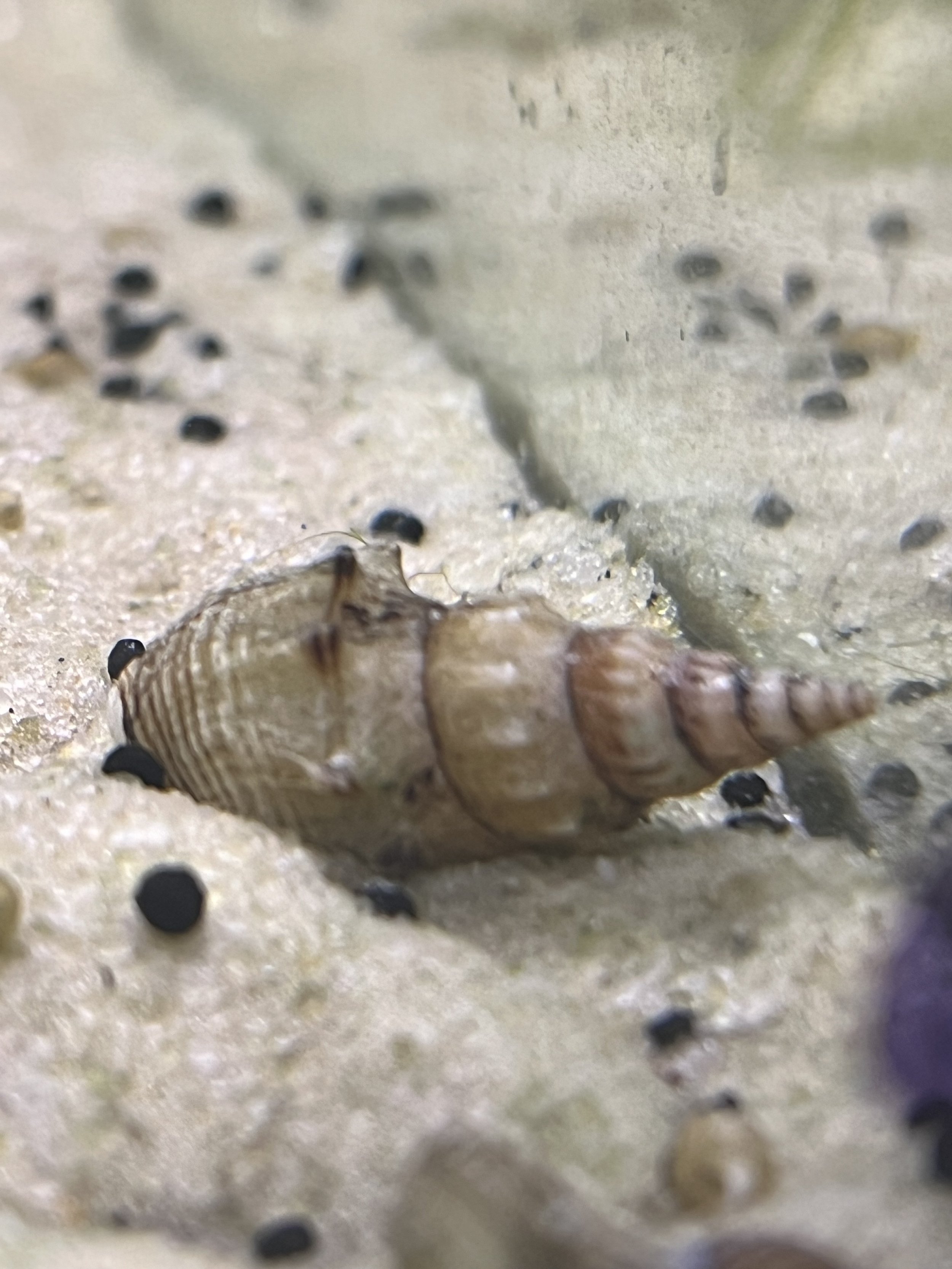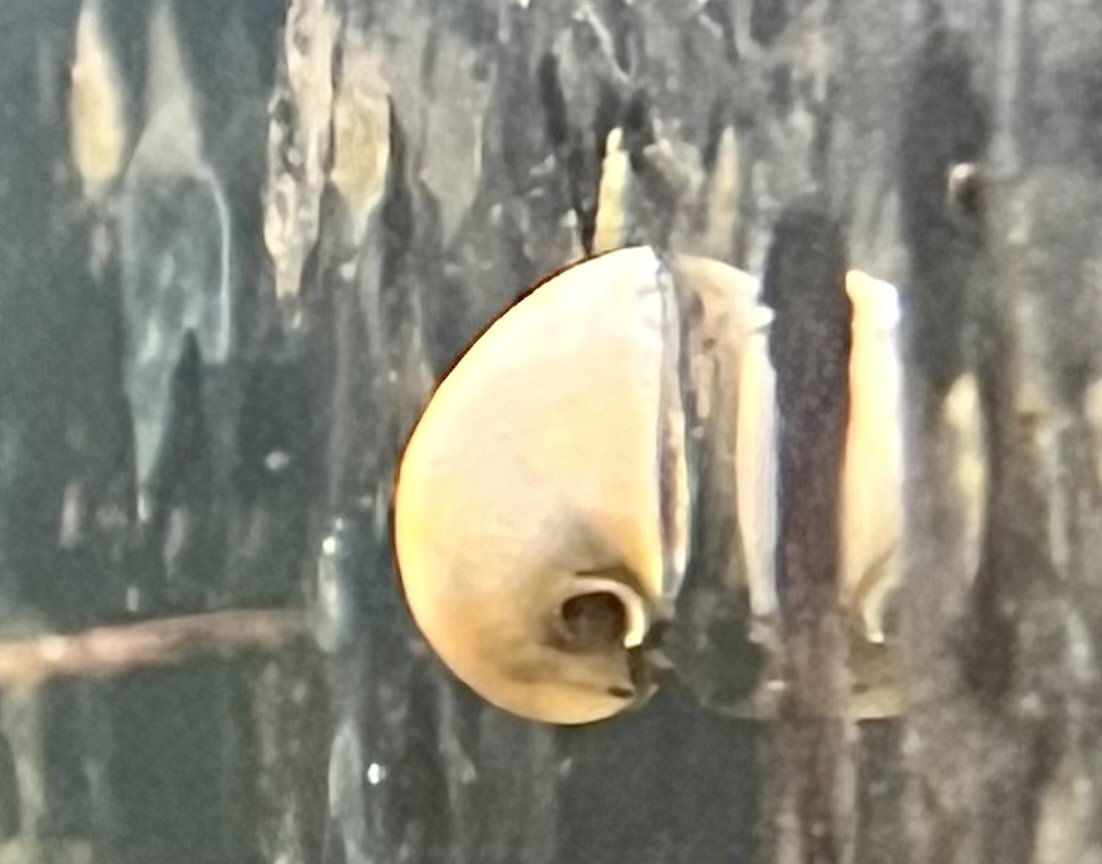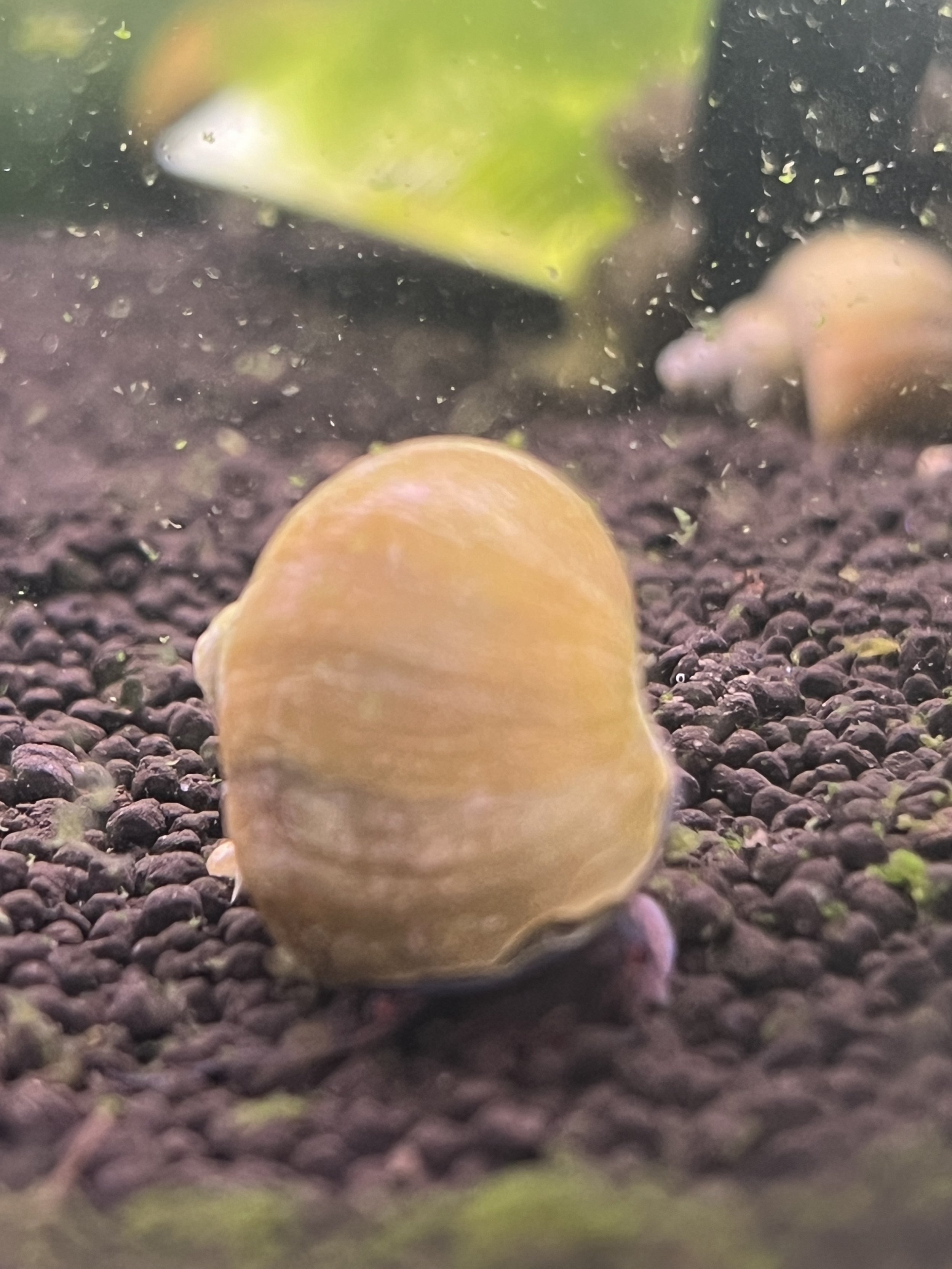 Image 1 of 2
Image 1 of 2

 Image 2 of 2
Image 2 of 2



Prambanan Snail
The Prambanan Snail, scientifically known as Thiara winteri, is a freshwater snail species belonging to the Thiaridae family. This snail, native to tropical regions of Southeast Asia, particularly Indonesia, is named after the historic Prambanan temple complex in Indonesia. Known for its unique shell shape and ability to thrive in a variety of freshwater environments, the Prambanan Snail is both a functional and attractive addition to aquariums.
Physically, Thiara winteri is characterized by its elongated, cone-shaped shell, which is covered in ridges and small nodules, giving it a textured and rugged appearance. The shell typically has a brown to dark gray coloration, blending well with natural substrates. The striking, spiral design and rough surface of the shell make it quite distinctive among aquarium snails. Adult Prambanan Snails usually reach about 1 to 2 inches (2.5 to 5 centimeters) in length, with some individuals growing slightly larger depending on environmental conditions.
In the aquarium, Prambanan Snails are hardy and adaptable, making them suitable for a wide range of tank setups, including community tanks and planted aquariums. These snails are natural scavengers and excellent at cleaning algae, detritus, and uneaten food from the substrate. They spend much of their time burrowing into the substrate, helping to aerate it, which can be beneficial for plant roots and overall tank health. Despite their active foraging behavior, they are gentle creatures and do not harm live plants, making them ideal for planted tanks.
Water parameters for Thiara winteri should closely resemble the tropical conditions they are native to. They prefer slightly alkaline water with a pH range of 7.0 to 8.5 and temperatures between 72 to 86°F (22 to 30°C). Hard water is necessary for maintaining their shell health, as calcium is crucial for shell formation. In softer water conditions, calcium supplements may be needed to prevent shell erosion or damage.
Feeding Prambanan Snails is straightforward, as they are omnivorous scavengers. While they primarily graze on algae, biofilm, and organic debris, they should be supplemented with sinking pellets, algae wafers, and blanched vegetables such as zucchini and spinach. Offering a varied diet ensures they receive proper nutrition and maintain healthy shells.
Breeding Thiara winteri in captivity is possible but can be unpredictable. Like other Thiaridae snails, they are livebearers, meaning they give birth to fully developed juvenile snails rather than laying eggs. These juveniles are typically born well-developed and ready to start foraging immediately. Due to their slow reproduction rate, overpopulation is rarely an issue, making them easy to manage in home aquariums.
Overall, the Prambanan Snail (Thiara winteri) is a highly beneficial and attractive species for freshwater aquariums. Their ability to help clean algae and detritus, combined with their unique shell design, makes them an appealing choice for aquarists of all levels. By providing them with proper water conditions, calcium-rich food, and a varied diet, these snails can thrive and become an important part of the tank’s ecosystem.
The Prambanan Snail, scientifically known as Thiara winteri, is a freshwater snail species belonging to the Thiaridae family. This snail, native to tropical regions of Southeast Asia, particularly Indonesia, is named after the historic Prambanan temple complex in Indonesia. Known for its unique shell shape and ability to thrive in a variety of freshwater environments, the Prambanan Snail is both a functional and attractive addition to aquariums.
Physically, Thiara winteri is characterized by its elongated, cone-shaped shell, which is covered in ridges and small nodules, giving it a textured and rugged appearance. The shell typically has a brown to dark gray coloration, blending well with natural substrates. The striking, spiral design and rough surface of the shell make it quite distinctive among aquarium snails. Adult Prambanan Snails usually reach about 1 to 2 inches (2.5 to 5 centimeters) in length, with some individuals growing slightly larger depending on environmental conditions.
In the aquarium, Prambanan Snails are hardy and adaptable, making them suitable for a wide range of tank setups, including community tanks and planted aquariums. These snails are natural scavengers and excellent at cleaning algae, detritus, and uneaten food from the substrate. They spend much of their time burrowing into the substrate, helping to aerate it, which can be beneficial for plant roots and overall tank health. Despite their active foraging behavior, they are gentle creatures and do not harm live plants, making them ideal for planted tanks.
Water parameters for Thiara winteri should closely resemble the tropical conditions they are native to. They prefer slightly alkaline water with a pH range of 7.0 to 8.5 and temperatures between 72 to 86°F (22 to 30°C). Hard water is necessary for maintaining their shell health, as calcium is crucial for shell formation. In softer water conditions, calcium supplements may be needed to prevent shell erosion or damage.
Feeding Prambanan Snails is straightforward, as they are omnivorous scavengers. While they primarily graze on algae, biofilm, and organic debris, they should be supplemented with sinking pellets, algae wafers, and blanched vegetables such as zucchini and spinach. Offering a varied diet ensures they receive proper nutrition and maintain healthy shells.
Breeding Thiara winteri in captivity is possible but can be unpredictable. Like other Thiaridae snails, they are livebearers, meaning they give birth to fully developed juvenile snails rather than laying eggs. These juveniles are typically born well-developed and ready to start foraging immediately. Due to their slow reproduction rate, overpopulation is rarely an issue, making them easy to manage in home aquariums.
Overall, the Prambanan Snail (Thiara winteri) is a highly beneficial and attractive species for freshwater aquariums. Their ability to help clean algae and detritus, combined with their unique shell design, makes them an appealing choice for aquarists of all levels. By providing them with proper water conditions, calcium-rich food, and a varied diet, these snails can thrive and become an important part of the tank’s ecosystem.
The Prambanan Snail, scientifically known as Thiara winteri, is a freshwater snail species belonging to the Thiaridae family. This snail, native to tropical regions of Southeast Asia, particularly Indonesia, is named after the historic Prambanan temple complex in Indonesia. Known for its unique shell shape and ability to thrive in a variety of freshwater environments, the Prambanan Snail is both a functional and attractive addition to aquariums.
Physically, Thiara winteri is characterized by its elongated, cone-shaped shell, which is covered in ridges and small nodules, giving it a textured and rugged appearance. The shell typically has a brown to dark gray coloration, blending well with natural substrates. The striking, spiral design and rough surface of the shell make it quite distinctive among aquarium snails. Adult Prambanan Snails usually reach about 1 to 2 inches (2.5 to 5 centimeters) in length, with some individuals growing slightly larger depending on environmental conditions.
In the aquarium, Prambanan Snails are hardy and adaptable, making them suitable for a wide range of tank setups, including community tanks and planted aquariums. These snails are natural scavengers and excellent at cleaning algae, detritus, and uneaten food from the substrate. They spend much of their time burrowing into the substrate, helping to aerate it, which can be beneficial for plant roots and overall tank health. Despite their active foraging behavior, they are gentle creatures and do not harm live plants, making them ideal for planted tanks.
Water parameters for Thiara winteri should closely resemble the tropical conditions they are native to. They prefer slightly alkaline water with a pH range of 7.0 to 8.5 and temperatures between 72 to 86°F (22 to 30°C). Hard water is necessary for maintaining their shell health, as calcium is crucial for shell formation. In softer water conditions, calcium supplements may be needed to prevent shell erosion or damage.
Feeding Prambanan Snails is straightforward, as they are omnivorous scavengers. While they primarily graze on algae, biofilm, and organic debris, they should be supplemented with sinking pellets, algae wafers, and blanched vegetables such as zucchini and spinach. Offering a varied diet ensures they receive proper nutrition and maintain healthy shells.
Breeding Thiara winteri in captivity is possible but can be unpredictable. Like other Thiaridae snails, they are livebearers, meaning they give birth to fully developed juvenile snails rather than laying eggs. These juveniles are typically born well-developed and ready to start foraging immediately. Due to their slow reproduction rate, overpopulation is rarely an issue, making them easy to manage in home aquariums.
Overall, the Prambanan Snail (Thiara winteri) is a highly beneficial and attractive species for freshwater aquariums. Their ability to help clean algae and detritus, combined with their unique shell design, makes them an appealing choice for aquarists of all levels. By providing them with proper water conditions, calcium-rich food, and a varied diet, these snails can thrive and become an important part of the tank’s ecosystem.






